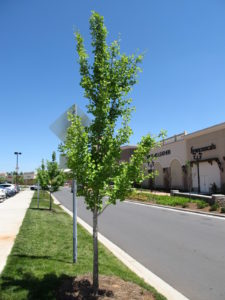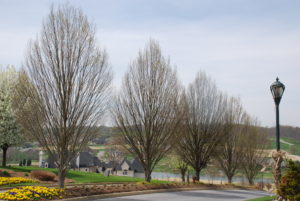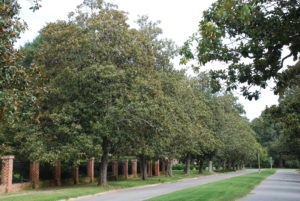Across the U.S. and Canada, city planners, landscape architects, and property owners now enjoy a wide selection of landscape trees to plant on city streets, along roadsides, and in yards and gardens. Over the past half century new and improved varieties (cultivars) are disease and pest resistant and exhibit better branching and architecture. We now know to avoid species with messy fruits or that produce excessive leaf litter. Most important is to select according to the tree size (mature height and branch spread).
Plant scientists and city arborists continue to evaluate tree selections that perform best in their areas. Below is a list of more than 50 common species that are currently planted across the U.S. THIS LIST IS NOT COMPLETE. Planting some tree species such as ash (Fraxinus), black walnut (Juglans), and callery pear (Pyrus) are on the decline because of pest and disease problems or weak branching.
Before planting a tree, reach out to local experts at nurseries and full-service garden centers or call the county/city Extension office. State universities, botanical gardens, and arboretums may also provide tree lists. Take a few minutes to look up for utility lines and telephone utility companies to locate buried lines.
List of Landscape Trees:
Japanese maple (Acer palmatum)
Norway maple (Acer platanoides)
Red maple (Acer rubrum)
Silver maple (Acer saccharinum)
Sugar maple (Acer saccharum)
Ohio Buckeye (Aesculus glabra)
Serviceberry (Amelanchier spp.)
Birch (Betula nigra)
Paper birch (Betula papyrifera)
Horsechestnut (Aesculus hippocastanum)
Northern catalpa (Catalpa speciosa)
American hornbeam (Carpinus carolinana)
European hornbeam (Carpinus betulus)
Hackberry (Celtis occidentalis)
Eastern redbud (Cercis canadensis)
Yellowwood (Cladrastis kentukea)
Washington hawthorn (Crataegus phaenopyrum)
Green hawthorn (Crataegus viridis)
White ash (Fraxinus americana)
Green ash (Fraxinus pensylvanica)
Ginkgo (Ginkgo biloba)
Honeylocust (Gleditsia triacanthos)
Kentucky coffeetree (Gymnocladus dioicus)
Black walnut (Juglans nigra)
Red cedar (Juniperus virginiana)
Goldenrain tree (Koelreuteria paniculata)
Crape myrtles (Lagerstroemia x spp.)
Sweetgum (Liquidambar styraciflua)
Tulip poplar (Liriodendron tulipifera)
Southern magnolia (Magnolia grandiflora)
Crabapple (Malus spp.)
Blackgum, tupelo (Nyssa sylvatica)
Callery pear (Pyrus x calleryana)
Ironwood (Ostrya virginiana)
London plane, Sycamore (Platanus x acerfolia)
American sycamore, planetree (Platanus occidentalis)
White poplar (Populus alba)
Cottonwood (Populus deltoides)
Flowering cherries (Prunus spp.)
White oak (Quercus alba)
Bur oak (Quercus macrocarpa)
Pin oak (Quercus palustris)
Willow oak (Quercus phellos)
Northern red oak (Quercus rubra)
Black locust (Robinia pseudoacacia)
Japanese Scholar, pagoda tree (Styphnolobium japonicum)
Mountain ash (Sorbus spp.)
Japanese tree lilac (Syringa reticulata)
Bald cypress (Taxodium distichum)
Eastern arborvitae (Thuja occidentalis)
American linden (Tilia americana)
Little leaf linden (Tilia cordata)
American elm (Ulmus americana)
Lacebark elm (Ulmus parvifolia)
Japanese zelkova (Zelkova serrata)




 Posted in
Posted in 
